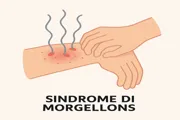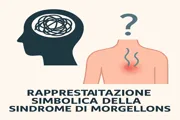


← Also read: Narcissism – symptoms and causes of the disorder
Morgellons syndrome is characterized by skin sensations such as itching, crawling, and stinging, along with the presence of visible fibers and lesions caused by scratching.
Most of the medical community currently classifies Morgellons as a psychiatric condition, similar to delusional parasitosis, though debate continues regarding possible organic causes.
The fibers seen under the skin are often identified as textile fibers embedded through scratching. However, some researchers continue to investigate alternative biological or environmental origins.
Dermatologists are encouraged to adopt an empathetic, investigative attitude, avoiding dismissal and exploring both dermatological and psychiatric dimensions of the condition.
Studies have suggested possible associations with infections like Babesia, elevated C-reactive protein, and metabolic factors such as hyperinsulinemia.